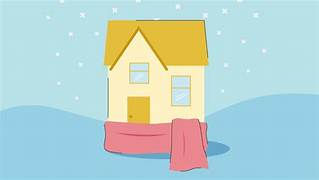Winterizing Your Home
- Jack Mayo

- Aug 21, 2024
- 2 min read
Updated: Aug 24, 2024

Essential Tips for a Cozy and Efficient Seaso
As the days grow shorter and temperatures drop, it’s time to prepare your home for the winter season. Winterizing your home not only ensures comfort but also helps to save on energy bills and protect your property from potential damage. Here are some essential tips to help you winterize your home effectively.
1. Inspect and Seal Windows and Doors
Drafty windows and doors can significantly increase your heating costs. Check for gaps and cracks around frames and apply weatherstripping or caulk to seal them. Consider using window insulation kits for an extra layer of protection.
2. Check Your Heating System
Before the cold weather hits, schedule a maintenance check for your heating system. Change filters, inspect ducts, and ensure that your furnace is operating efficiently. If you have a fireplace, have it cleaned and inspected to prevent any fire hazards.
3. Insulate Pipes
Exposed pipes in unheated areas can freeze and burst, causing extensive damage. Insulate these pipes with foam sleeves or wrap them with heat tape, especially those in attics, basements, and crawl spaces.
4. Prepare Your Roof and Gutter
Inspect your roof for missing shingles or signs of damage. Clean your gutters to prevent ice dams from forming, which can lead to leaks and roof damage.
6. Inspect Insulation
Check the insulation in your attic and crawl spaces. Proper insulation will keep your home warm and reduce heating costs. If your insulation is insufficient, consider adding more to maintain a comfortable temperature.
7. Reverse Ceiling Fans
If you have ceiling fans, reverse their direction to push warm air down from the ceiling into the living space. This simple adjustment can enhance the efficiency of your heating system.
8. Prepare Your Outdoor Spaces
Drain and store garden hoses, and winterize outdoor faucets to prevent freezing. Additionally, cover outdoor furniture to protect it from the elements.
9. Stock Up on Winter Supplies
Ensure you have enough firewood, blankets, and emergency supplies in case of severe weather. Having a well-stocked emergency kit can provide peace of mind during winter storms.
10. Create a Winter Emergency Plan
Lastly, develop a plan for winter emergencies. This should include contact numbers for local services, an emergency supply kit, and a communication plan with family or neighbors.
Conclusion
Winterizing your home is an essential task that can save you time, money, and stress during the colder months. By taking these proactive steps, you can ensure your home remains warm, efficient, and safe all winter long. Embrace the season with comfort knowing you’ve prepared your home for whatever winter brings!



Comentários